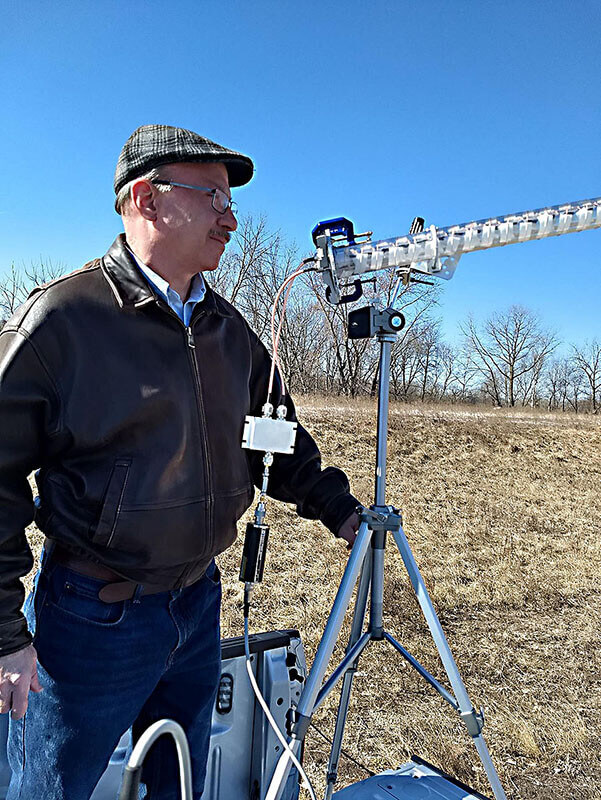Innovative system may help internet users, airports better transmit critical data
 John Mott, an associate professor in the Purdue Polytechnic Institute, led the development of cost-effective technology aimed at helping to enable network connectivity in rural areas. (Image provided)
John Mott, an associate professor in the Purdue Polytechnic Institute, led the development of cost-effective technology aimed at helping to enable network connectivity in rural areas. (Image provided) WEST LAFAYETTE, Ind. – Ah, the joys of living out in the country: the quiet, the space and the peacefulness. Then there's the internet connection, which can go from bad to worse quickly in many rural areas.
Purdue University researchers soon may have an answer to help create better options for rural Wi-Fi – and the same technology may help airports and the rural transmission of critical data for utilities and other service providers.
"Distributed devices in many rural locations are located at significant distances from potential network connection points," said John Mott, an associate professor in the Purdue Polytechnic Institute and the director of Purdue's Advanced Aviation Analytics Institute for Research. "In addition, such applications often have antenna height restrictions and face transmission challenges due to obstacles that protrude into the transmission path. Yet the information from such devices is critical for many information systems that need to collect data from these rural areas."
The current solution for long-range Wi-Fi transmission is to use high-powered transmitters with antennas mounted at high elevations. Mott said these solutions are expensive and prohibitive for many applications associated with antenna height restrictions, such as aviation applications.
Mott and his team developed a bihelical receiving antenna that efficiently recaptures a portion of signal energy lost due to multipath interference to achieve a more powerful received signal.
Through an innovative design and the use of directional antennas, this technology is an antenna system that can transmit and receive data over long ranges at low elevations.
"Our cost-effective technology is aimed at helping to enable network connectivity in rural areas," said Mott, the founding editor of the Journal of Aviation Technology and Engineering. "This technology allows the use of reduced-height antennas. It is also a low-cost solution that reduces the amount of required transmitter power."
The researchers are working with the Purdue Research Foundation Office of Technology Commercialization to patent the technology. They are looking for additional partners and those interested in licensing the technology.
The work aligns with Purdue's Giant Leaps celebration of the university's global advancements made in sustainability as part of Purdue's 150th anniversary. It is one of the four themes of the yearlong celebration's Ideas Festival, designed to showcase Purdue as an intellectual center solving real-world issues.






